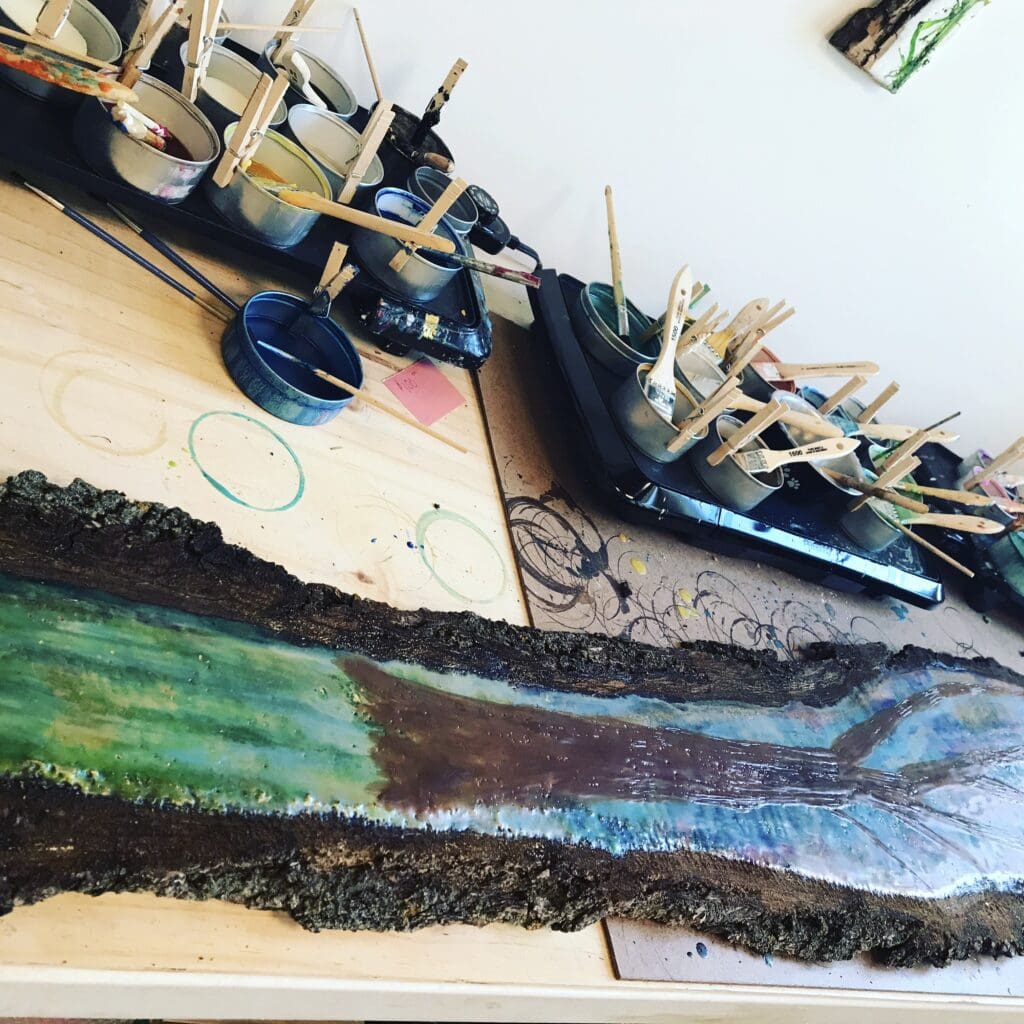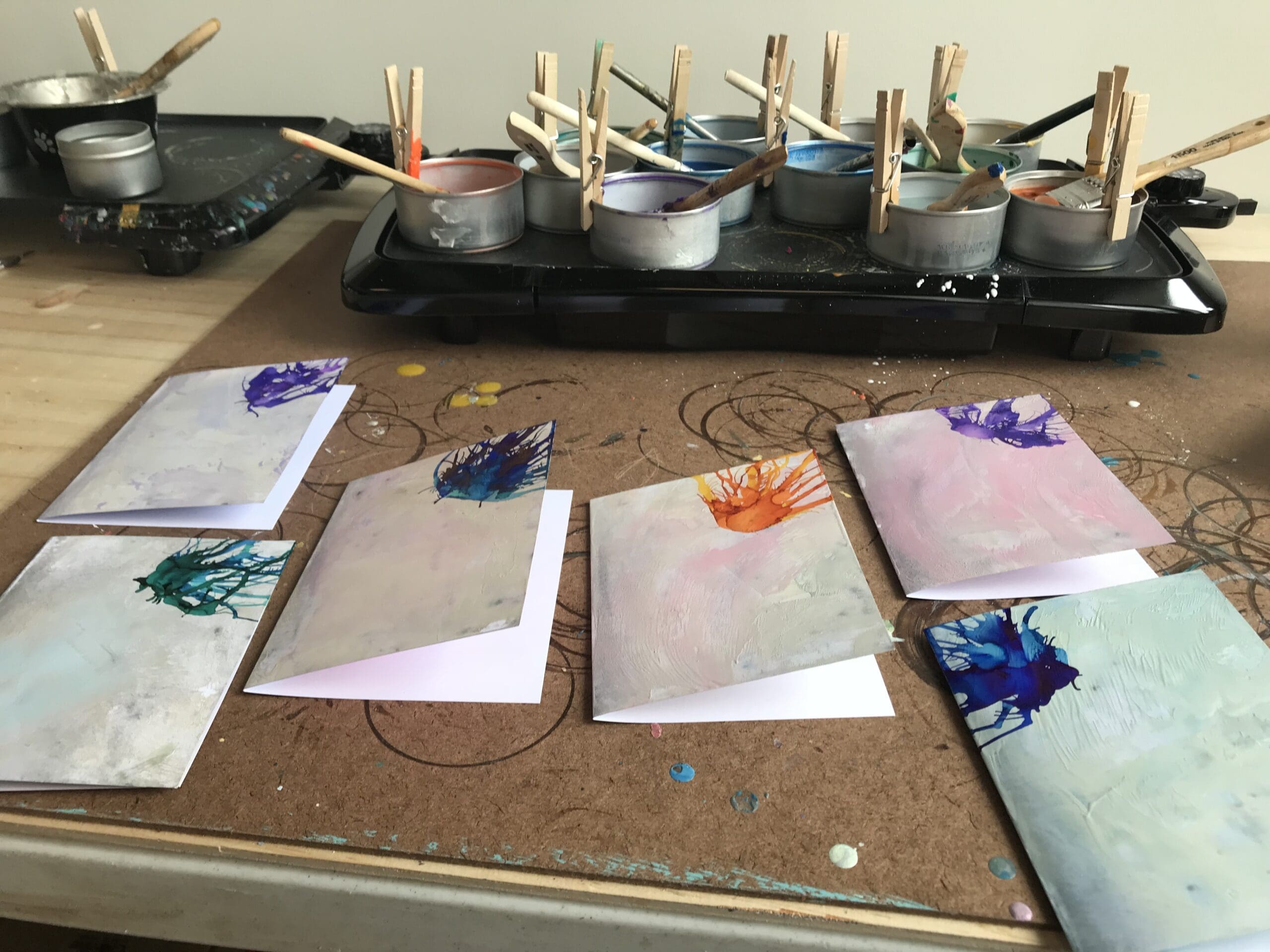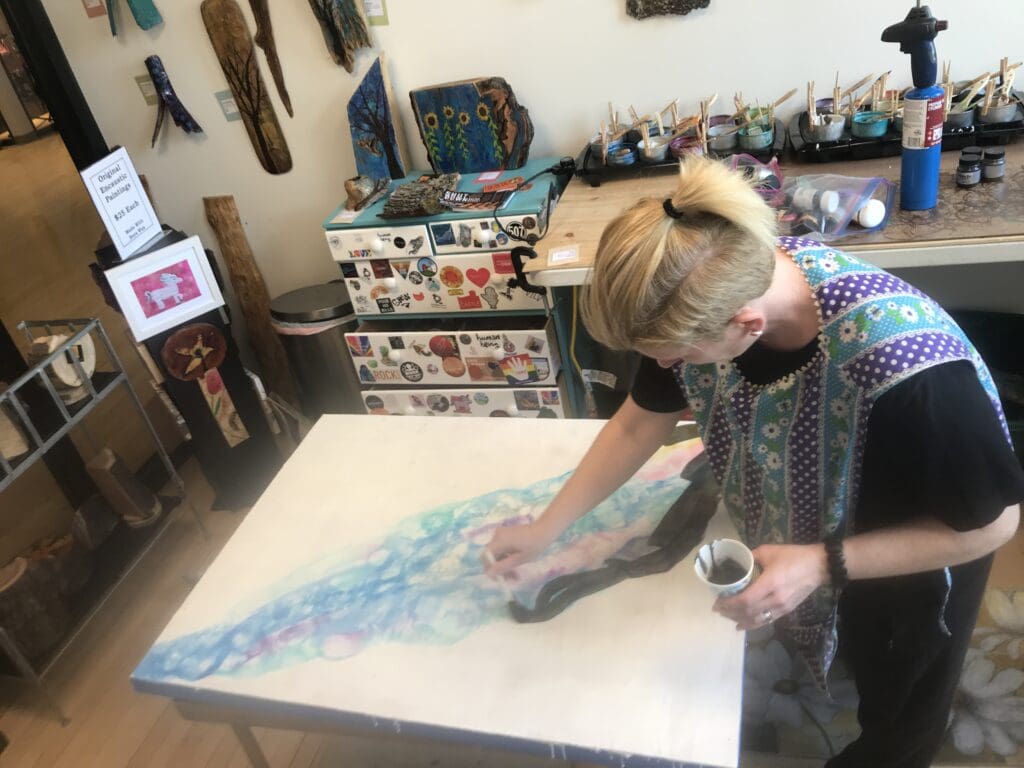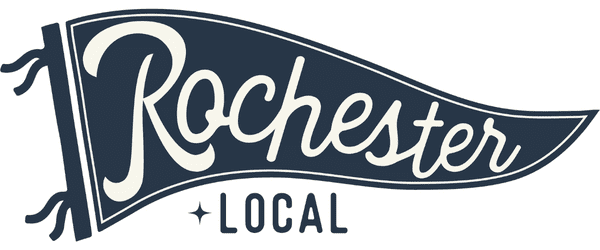
My husband and I made our way to Rochester almost 25 years ago because of Mayo Clinic. My undergraduate degree was in nursing, and the promise of free graduate school was too good to pass up. While Mayo Clinic drew us in, the creative arts community in Rochester has been a big factor in keeping us here.
I’ve always enjoyed creating and became a stained-glass artist before my daughters, Eleanor (17) and Abigail (15) were born. After my daughters were born, I found stained glass became too time-intensive to continue. Around that time, I discovered encaustic painting. I took a local encaustic painting class, and I was hooked.

The medium used for encaustic painting is comprised of beeswax, resin, and pigment. It is warmed to a molten state and then applied onto a porous surface, like wood, then fused with a torch.
While I am painting, I have pancake griddles warmed to 200 degrees and metal cups placed on top filled with my encaustic medium. For color, I typically add oil paint or powder pigment to the encaustic medium. The paint brushes are made of natural animal hair and not plastic, since plastic can melt.


I paint the encaustic medium on the wood substrate, let it cool for a minute or two, then use a torch to fuse the medium into the wood. The joy of creating with fire, often thought to be a destructive force, is exhilarating. As layers of wax are applied, each one must be fused into the layer below and cooled before adding more medium.
I always think of encaustic painting as using two “brushes:” the first brush used to place the encaustic medium, and the second brush, the torch that fuses and moves pigment. Depending on how much is applied, the medium will stay in place or melt everywhere. Most frequently, I use wood that I have salvaged from local cabinet makers’ dumpsters or local wood workers’ “burn piles.” I’ve also gone to the Rochester Public Utilities (RPU) facility to see what canvases I can find, such as discarded electrical spindles.

One of my favorite techniques to create movement in the wax is mixing clear shellac with powdered pigment, painting it on top of the wax, and lighting it on fire. When the shellac mixture dries, the burn can be more controlled. I have also experimented with different types of ink on top of the wax. I find it fascinating to use alcohol inks and then light the alcohol on fire to see how it moves over the wax.
While I typically prefer to paint on a stiffer surface like wood so that I can apply several layers of wax, I do sometimes create on paper. Using an encaustic iron, I’ll melt the wax onto the iron and swipe it over the paper to create patterns. Applying it in this thin, ironed-on method, makes it so that the wax will not crack.
Rochester has amazing venues for showcasing local artists. Over the years, I’ve belonged to artists cooperatives like Gallery 24 and the SEMVA Art Gallery which are wonderful for both new and experienced artists for building community and making connections. Currently, I’m a member of Threshold Arts, and my art can be found in their storefronts on Broadway Ave and in the Historic Chateau Theater. My work can also be found in other small businesses that support local artists, like Art Heads Emporium, Clover and Rose, and Gathered Goods.

Rochester also has several art galleries that support local artists. I’ve been fortunate to exhibit at Threshold Arts, Forager Brewery, Café Steam, and the Rochester Civic Theatre. Currently, I am the curator of the art gallery space at 125 Live where we feature 4-6 local artists every quarter.
Rochester artists are fortunate to be able to apply for the Southeast Minnesota Arts Council (SEMAC) grants. In 2023, I applied for and won a SEMAC grant to showcase how my encaustic, large-format, two-dimensional pieces of art could be translated into smaller, functional pieces of art as encaustic earrings. I took salvaged items, like tree bark, discarded wooden shapes, and chipboard, and incorporated them to create a substrate using a new process I developed.

Each encaustic earring is unique, lightweight, and earth-friendly. My live edge and birch bark earrings were created by salvaging bark from locally fallen trees, and our backyard wood pile continues to supply most of the bark for my earrings. Each earring is cut and sanded by hand, glued to reinforce the strength, and covered in resin to make the material more durable.
Thanks for taking the time to learn more about my encaustic art process and for supporting the local arts community. To learn more about me and what I create, please check out www.bethsieversart.com.

